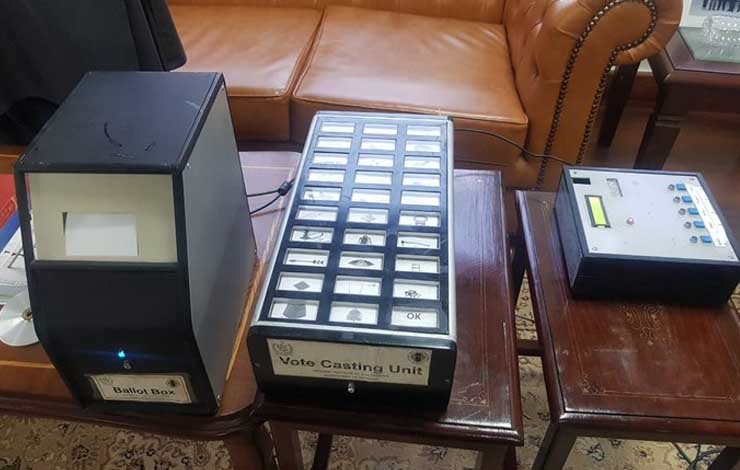International Researches Suggest EVM Brings Transparency in Elections
The reports suggest that although the machines were not fully perfect, they have helped bring transparency

Ever since the government has pushed the opposition parties on the use of the electronic voting machine (EVM) in the electoral process, its credibility has been challenged passionately by the opposition parties but the international researches suggest otherwise and say it brings transparency in the elections.
In a presser on Monday, Federal Information Minister Fawad Chaudhry once again extended the offer to the opposition parties on electoral reforms.
Opposition’s naysaying
However, Pakistan People’s Party (PPP) Chairman Bilawal Bhutto Zardari refused to hold talks with the government on the matter.
“We are ready for electoral reforms but the Election Commission of Pakistan (ECP) can play a role,” he added.
Read Also
Fisticuffs Between Bureaucracy & Politicians Aren’t New
At the same time, Bilawal Bhutto Zardari called for elimination of the establishment’s role in the elections as the main task before electoral reforms.
Further, while talking to News 360, Rana Sanaullah said it was ECP’s job to carry out electoral reforms.
He added that if any, the government should put a proposal before the commission.
Rana Sanaullah refused to coperate with the government. In 3 years, they (government) have destroyed the country, he said.
PML-N leader emphasized that the concerns on NA-249 by-poll should be addressed and suggested carrying out a forensic audit of polling stations as demanded by his party’s defeated candidate, Miftah Ismail.
PML-N leader claimed that the production orders of the NA Opposition Leader Shahbaz Sharif were not issued on the directions of Prime Minister Imran Khan.
Answering a question, Rana Sanaullah said that National Assembly (NA) Speaker Asad Qaiser did not dare to talk about injustice with a member of the assembly.
“He has no shame and no respect for his office”, he added.
Rana Sanaullah said PML-N would abide by the decisions taken by Pakistan Democratic Movement (PDM).
International researches back EVMs for transparency
Further, Journalist Benazir Shah also shared a news story of a polling station in India where the votes cast by EVMs were manipulated.
And while we are on the topic of e-voting, here are some examples from India of how electronic voting can be manipulated.
In 2019, in Satara, all votes went to the ruling BJP no matter which button voters hit on the EVM. https://t.co/ksV1nd4sLR
— Benazir Shah (@Benazir_Shah) May 3, 2021
Anchorperson Fereeha Idrees countered Benazir’s argument against EVM.
Rightly pointed out how it can be manipulated, yet, the system should still move forward and loopholes need to be covered. Am sure there can be mechanisms implemented to safeguard free and fair electronic voting as it will still have lesser chance to be rigged.
— Fereeha@abbtak (@Fereeha) May 3, 2021
Contrarily, two international research reports recommended EVMs could mitigate electoral fraud.
Brookings Institute & Cambridge researches on Indian elections through EMVs
A research by Brookings Institute on EVMs said, “As per the Supreme Court of India’s ruling in 2019, a random matching of Voter Verifiable Paper Audit Trail (VVPAT) slips with EVMs took place in five polling booths per assembly segment. Of the 1.73 million VVPATs deployed, slips from 20,625 VVPATs were physically counted. The physical audit did not find a single case of a mismatch between the VVPAT slip and the EVM count”.
Another research report on EVM conducted by Cambridge concluded, “Results show that the switch from paper to electronic voting in India was associated with substantial political effects. Invalid voting was virtually eliminated, with this decline also being associated with an increase in the vote for smaller political parties, often from outside the traditional party system”.
Despite a few cases of manipulation through EVM, the international research reports suggest that although the machines were not fully perfect as yet, they have helped bring transparency.



